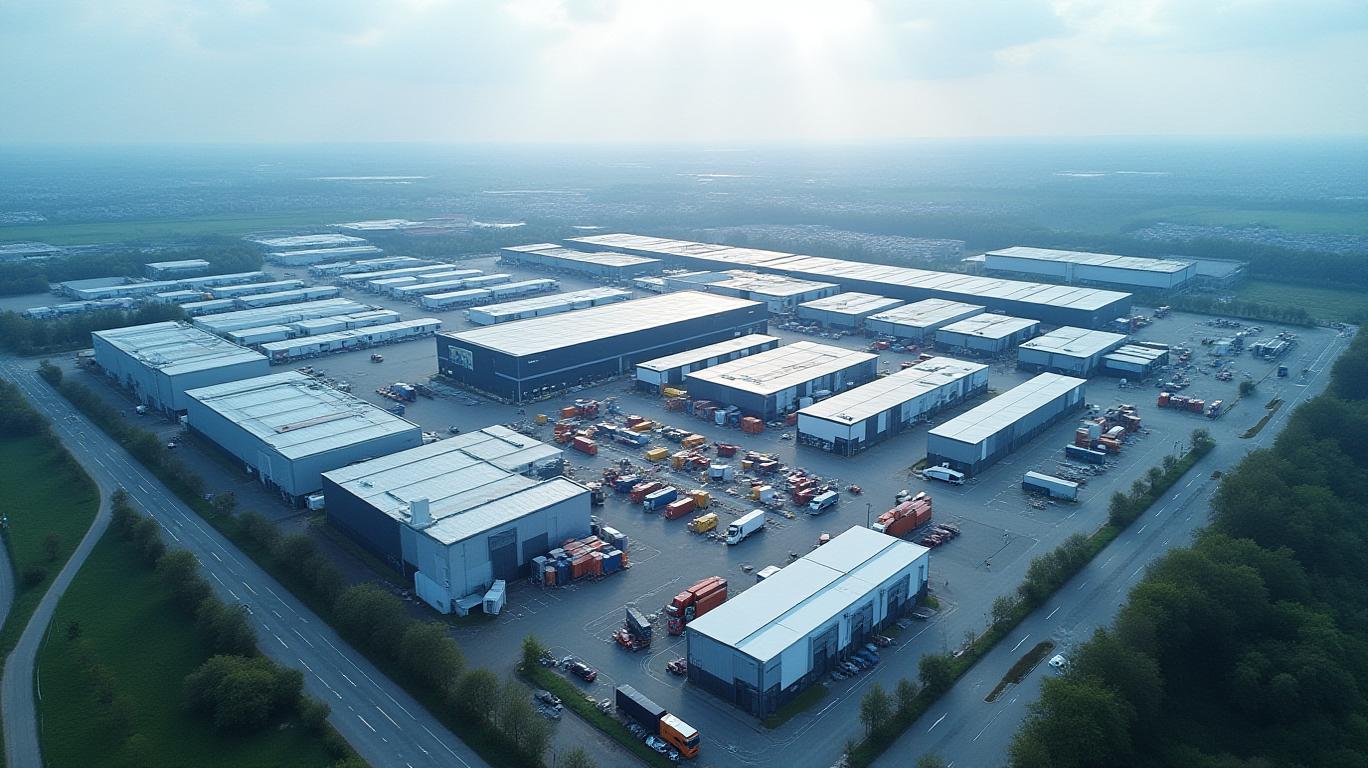GigaCloud's European Gambit: A Hidden Growth Engine in B2B E-Commerce
In an era of global economic uncertainty,
. (GCT) has quietly positioned itself as a standout player in the B2B e-commerce space, leveraging its European expansion to defy macro headwinds. While short-term margin pressures and industry volatility have kept valuations muted, the company’s Q1 2025 results and strategic execution reveal a compelling narrative: GCT is building a sustainable growth engine through geographic diversification and ecosystem-driven innovation. Here’s why investors should act now.Q1 Revenue Surge: Proof of European Market Penetration
GCT’s first-quarter performance delivered a stark rebuttal to skeptics. Revenue rose 8.3% YoY to $271.9 million, fueled by a 70% surge in European product revenue—a figure explicitly credited by CFO Erica Wei as the linchpin of the beat. The opening of its Bremen, Germany fulfillment center (

The Q2 guidance of $275–305 million reflects cautious optimism, but the midpoint aligns with Q1’s strong performance. While analysts had priced in risks like U.S. furniture sector softness (a 17% YoY drop in domestic product revenue), European momentum has insulated GCT from broader industry slumps.
The B2B Marketplace: A Model Built for Global Scale
GCT’s Supplier Fulfilled Retailing (SFR) model is its secret weapon. By connecting Asian manufacturers with European resellers, GCT has created a B2B ecosystem that reduces reliance on physical retail. The 56% YoY GMV growth of its marketplace underscores this model’s power, while partnerships like Scott Living’s Branding-as-a-Service (BaaS)—which allows brands to leverage GCT’s logistics and tech without capital investment—add stickiness.
This scalability is underappreciated. Unlike traditional e-commerce platforms, GCT’s model operates with light asset intensity, allowing it to grow margins as its European footprint expands. The EU’s focus on infrastructure and defense spending (notably in Germany) further tailwinds demand for large parcel goods—a core GCT competency.
Margin Pressures vs. Long-Term Profitability: A Calculated Trade-Off
Critics point to GCT’s 23.4% gross margin (down from 26.5% YoY) as a red flag. Yet this contraction is temporary, driven by one-time costs like the Bremen facility and elevated delivery fees. Management has been clear: economies of scale will kick in as new Noble House SKUs ramp up (3–6 months) and as European GMV contributions rise.
Meanwhile, the $287.5 million cash pile and aggressive $78 million buyback program (already 80% utilized) signal confidence. The company is prioritizing growth over short-term margins—a calculated move given the $28.33 consensus price target, which is 28% above current levels.
Why GCT is Undervalued—And Set to Outperform
GCT’s shares trade at ~12x trailing EBITDA, a discount to peers like Amazon’s B2B arm (18x) and Alibaba’s 16x. This gap ignores three critical advantages:
1. European diversification: A region with strong fiscal tailwinds but less exposure to U.S. tariff wars.
2. Light asset model: Minimal capex needs compared to pure-play logistics firms.
3. BaaS ecosystem: A recurring revenue stream that reduces customer churn.
The Bottom Line: Act Now Before the Catalysts Converge
GCT’s European expansion is not just a growth driver—it’s a strategic moat in a fragmented B2B landscape. While macro risks linger, the company’s liquidity, buyback discipline, and scalable model position it to outperform peers. The $28.33 consensus target is a conservative floor; upside exists if margins stabilize and European GMV crosses a critical mass.
Investors seeking resilience in volatility should act now: GCT is a buy at current levels. The European gambit is paying off—and the market is finally catching up.
Note: Always conduct independent research and consult a financial advisor before making investment decisions.

Comments
No comments yet